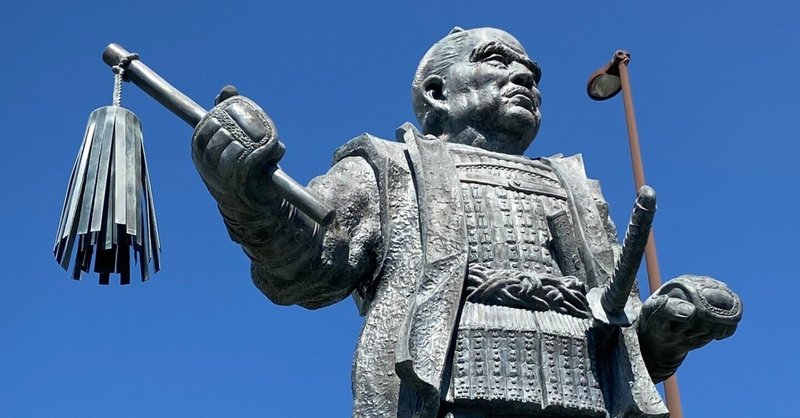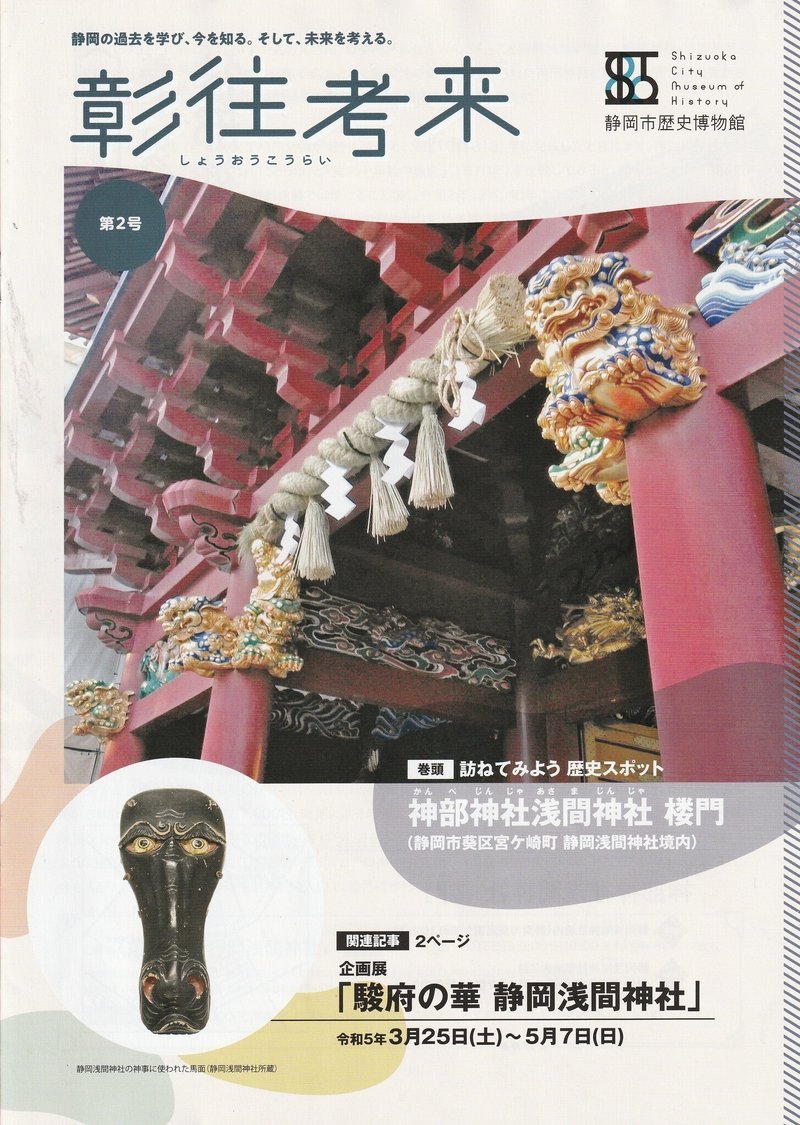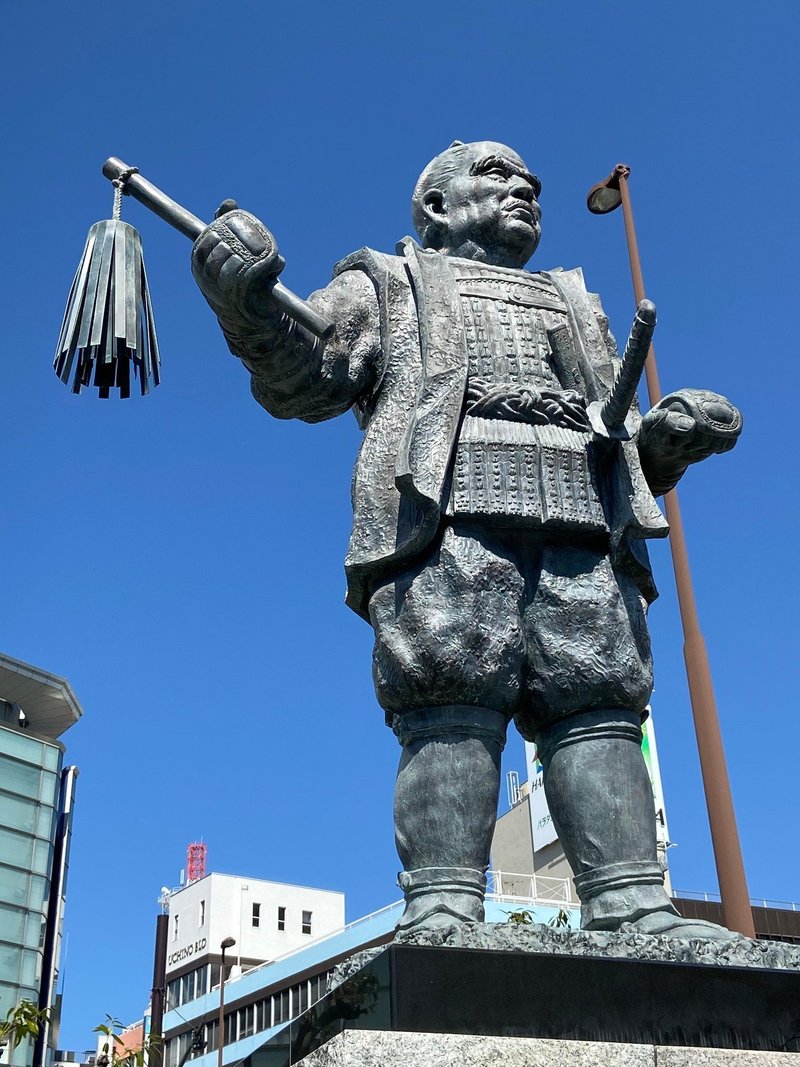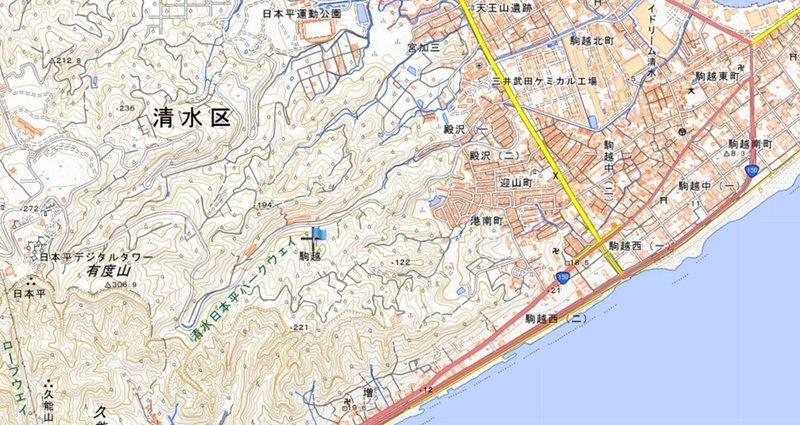
【~連載~静岡の歴史を学ぼう223】Historical documents issued to farmer's villages農民の村に出された歴史的文書
※ この記事は「静岡移住計画Facebook」に掲載されております。
静岡市歴史博物館の小冊子「彰往考来・しょうおうこうらい」。
博物館の1階で他のパンフレットと共に無料で配布されています。充実の内容を読んでみませんか。
古文書を読み解くという大変な作業を通して静岡の専門家が静岡の歴史を紹介してくれます。まさに歴史の「通訳」です。

こちらは第2号
Historical documents issued to farmer's villages
農民の村に出された歴史的文書
In 1589, Tokugawa Ieyasu issued ‘The Order of seven articles’ for the Komagoe village in the present-day Suruga Ward.
1589年、徳川家康は「七か条定書」を現在の清水区にある、駒越村に出しました。

五か国統治時代(1586~1590年 40代の家康公)
この文書が出されたころの家康公
The document is also preserved by Shizuoka City.
この文書も静岡により保存されています。
It indicates that Tokugawa Ieyasu defined rules to collect taxes and to make local farmers work for service.
この文書は 徳川家康が農民たちに対して年貢そして労役を取り立てる規則を決めたことを示しています。
Clarified rules on how the local ruler collected tax were established.
地元の為政者たちがどのように税を徴収するか、明確な規則が確立されました。
Even daimyo could not collect tax unreasonably.
大名ですら、むやみに税を取り立てることは出来ませんでした。
Tokugawa Ieyasu himself suffered from ikko-ikki (a peasant uprising) in his territory, the Mikawa region, when he was in his 20s.
徳川家康自身、20代の時、領国の三河地方で一向一揆(農民の反乱)に苦しみました。

岡崎市 名鉄東岡崎駅前
Local farmers increased their power in the Sengoku period (Warring States period), so Lord Ieyasu as a local lord (daimyo) had to organiz the system of taxation.
地元の農民たちは戦国時代に力をつけてきました。ですから大名として家康公は課税の仕組みを整えなくてはなりませんでした。
‘The order of seven articles’ was distributed throughout all over his territory in the Suruga region.
「七か条定書」は駿河地方の彼の領地にあまねく配られました。
Some villages in Shizuoka have kept this document.
静岡の村の中にはこの文書を保管していたところもありました。
Later on, the document from the Komagoe Village was given to be housed by the city.
後に、駒越村の文書は静岡市によって所蔵されるため市に渡されました。

Local villagers accepted Ieyasu’s tax rule, so the locals preserved the document.
地元の村人たちは家康の税の規則を受け入れました。ですからその文書が残っています。
In addition, the number of villages that accepted such official rules increased from the Imagawa clan’s ruling period to Lord Ieyasu’s.
しかも、そのような公的な規則を受け入れた村の数は今川氏の時代から家康公の時代にかけて増えていきました。
Simply possessing this document is an indication that these villages accepted the decree by Ieyasu.
この文書を所有していることはこれらの村々が家康による命令を受け入れたということを示しています。
As the documents preserved by local merchants and farmers suggest, they were gradually granted their rights by the Imagawa clan and Lord Ieyasu.
地元の商人と農民が保管していた文書から分かるように、今川氏と家康公によって庶民たちは徐々に権利を与えられていました。
Even the Imagawa clan and Lord Ieyasu could not govern their territories without approving the local commoners’ rights.
今川氏そして家康公であっても、庶民たちの権利を認めることなしでは領国の統治ができませんでした。
In the past, we did not focus on the local commoners regarding Shizuoka’s history, however, they increased their power and forged their societies.
以前は、静岡の歴史に関して地元の庶民を顧みることはされませんでした。しかし彼ら、庶民こそが力を伸ばし、自身の社会を築いていったのです。
Such a historical background can be understood by looking at historical documents showcased in the Shizuoka City Museum of History.
静岡市歴史博物館に展示されている文書を見ることで、そのような歴史的背景を理解することが出来ます。


(参考資料)彰往考来(しょうおうこうらい) 静岡市歴史博物館発行 より
わたしたちの研究「駿河の戦国民衆と地域権力 ~地域が伝えた今川・徳川の古文書~」 静岡市歴史博物館 学芸課長 廣田 浩治著
この記事が気に入ったらサポートをしてみませんか?
